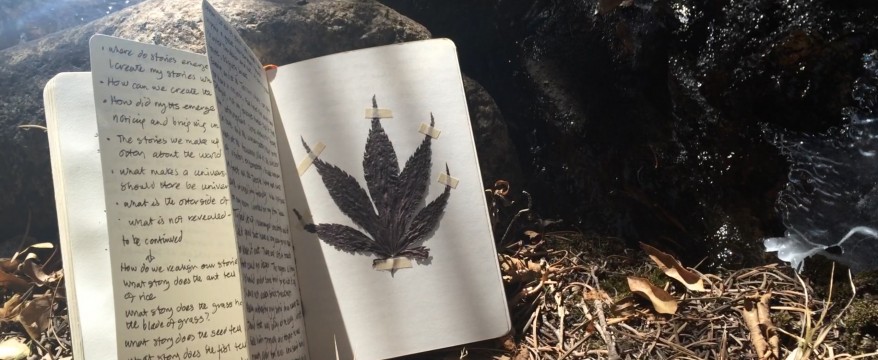Living Story: Story in Times of Change
“I will tell you something about stories. They aren’t just entertainment. They are all we have to fight off illness and death. You don’t have any thing if you don’t have stories….” –Leslie Marmon Silko
Recently I was told a story. It did not begin with “once upon a time” and it did not end with “…and they lived happily ever after.” It was more like a conversation. And it was told to me via Facebook. My friend’s daughter had come home from school one day and asked “when did the world start and when is the world going to end?”
This story came to me as I was beginning to make notes in my journal about our myths and legends. It made me wonder, are we ready for this question?
How would we answer this?
What does the mother tell her child?
I am sure that homosapiens have carried this question from the beginning of time, we sang it, we danced it, we carefully drew it in colored clays on rocks and we made up stories. The stories were our maps, they guided us in how to answer such questions. They showed us the way and kept us on track. The aborigines with their song lines to guide them through the rough terrain of the Australian desert, the Native Americans guided by the star stories, the indigenous peoples of the world received their inner compass bearings from their stories.
What story did the flame tell to the log?
What story did the grasshopper tell to the blade of grass?
What story did the wind whisper to the woman?
I remember as a young girl, growing up in Scotland, playing in my mother’s rhubarb patch. I had all these strange looking marionettes and if they were not strange I made them so. I was fascinated with the way they worked, all those strings that when pulled in a certain way would move arms and legs and lips. I could bring these beings into life with a flip of my wrist and I could take away life by a drop of my hand. I made my own world my imaginary world. I could conjure up anything my inner self would allow.The rhubarb patch became my world, a large damp green leaf became a roof of a house or a palace, the reddish stalks became trees in a huge dark forest, the damp rich soil soft places to rest. I spent hours in that world; I spent hours in that living story which would shift and change with the wind and rain. It was my story.Could that story also be someone else’s?
How do we tell that story?
Do we keep it to our selves? If so, how is that story heard? Who listens?
What does it take to be truth tellers? To understand a story one must listen with the same intent that it takes to discover that story.
Where are the stories of now to guide us?
What story did I tell to the rhubarb?
The world we live in now is a different place to that time in the garden in Scotland. The sun still sets and the sun still raises. The moon waxes and wanes, the seasons go in and out, the green leaves bud forth in distilled warmth and fall brown and wrinkled in the harsh cold. But all is rapidly changing, the world as we know it, as we have storied it, is not the same, it is spinning to a different tune, it is turning in another direction. It is turning inside out and our stories are not making sense any more. Our stories are misaligned and we cannot see or feel into another.
If stories are living do they have to keep changing? How do we feel our way back into story?
I still make up stories. I see them and feel them but where do they come from? Who told the first story?
These days I am far away from my mother’s rhubarb patch and far away from my homeland. Now without that patch in the garden I set out on long walks when I need to see my story living. When my feet touch the ground I wake up. When I get into that repetitive motion of putting on foot in front of the other, I begin to see and feel again. I see the grasshopper telling the story to the blade of grass and know what it is, the voice of the flame in the fireplace informs my story, the spiral in the tree trunk reminds me that my story should not be straight, the blue birds iridescent wings reflect the story back to me.
Does one need to have endless timeless wanderlust to keep the story alive?
The beads of sweat forming on my brow as I write, what story do they tell to the dry skin?
When we remember to “see” again, and I mean to really see, see with not only our eyes but with all our senses. When our antennae are up and fixed in the right direction we can sense the signs, these beginnings of our story. There are plenty of portals, entry points waiting to be shaped by our intuition and it is up to us to take agency to create a new path into the dark forest to rid it of the monsters, to trick the wolf and to find our grandmothers. However, I do not think that it will end with “and they lived happily ever after”, they lived happily until the need of another living story.
Chrissie Orr is the co-founder of El Otro Lado in the Schools, and the co-founder of the Academy’s Living Story Collaborative. Both programs engage story and its transformative powers to cultivate connection and belonging, strengthen community capacity, and renew our guiding narratives in this time of radical transitions.


